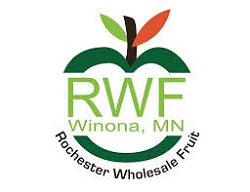When I began my career in retail as a produce clerk more than 45 years ago, visiting the produce department was much different than it is today.
To set the stage: Back then the produce manager was likely to be a career fruit and vegetable person, while the clerks on the team were one full-timer and a host of part-timers — like I was. The product mix included anywhere between 120 to 150 items.
There was no fresh-cut program, aside from halves and quarters of watermelon in summer. Lettuce consisted of loose and or wrapped iceberg, and if you offered variety, you had whole heads of romaine. Berries were only available in spring and summer, which consisted of strawberries and blueberries. Blackberries and Raspberries were a regional item due to limited supply and the lack of ability to keep them fresh. Most apple varieties were available in fall and winter, and citrus was available in winter and spring with some exceptions.
The point is that the produce department of that era was not considered the destination department it is today. It was a necessity for customers more than being experiential. Produce was not considered the store's profit center, though produce could boast as the department carrying the No. 1 volume and dollar item in the store: bananas.
The customer experience of that time was simply about making sure the department was fresh and appropriately stocked, while also answering customer questions. A great customer experience would have been plugging a watermelon to make sure it was ripe. Sounds familiar.
Over the past 30 years the produce department went through a paradigm shift, starting with packaged salads, which arrived around 1990. At the same time, a proliferation of new variety began showing up on produce shelves along with seasonal products, which became more readily available as counter-season production in Mexico, Central and South America increased to meet the needs of a growing category.
The caveat was that consumers were not as readily informed about new and interesting products they would encounter, so it was incumbent on retailers to educate their teams so they could educate consumers — all for a better customer experience. Sounds familiar, again.
Creating a great customer experience has changed dramatically. Retailers know more about their customers today and their purchase habits through loyalty programs and smart technology — yet there is something missing.
A differentiated experience is what retailers strive to achieve. A customer has many options today for where they purchase fruits and vegetables. But what makes them choose a specific store? Is it the banner, convenience, product mix, price, cleanliness, service? In fact, it is all these things and more.
Surveys reveal having a great experience ranks high on determining where consumers shop. So, how can a retailer maneuver through the plethora of customer expectations to meet them where they are and deliver a great experience day in and day out? Price will always be a driver for some customers, so addressing the pricing aspect with creating a good customer experience is key.
It is about the training and education
Someone once told me the check you do not write is the most expensive one. The essence of this statement is that when you avoid investing in something you do not feel is necessary, but is needed, it ends up costing you more over time.
A retailer’s greatest asset is its employees, those who are entrusted to execute and create a great customer experience each day. Investing in education and training is a crucial step to achieving an overall great experience. A well-trained and knowledgeable produce associate is highly valued and can be the difference between a good or poor experience.
The customer experience is dependent on how they felt when they engaged associates: Could they answer questions? Were they acknowledged? Were the store and department welcoming? Were they able to get what they needed?
When these factors are achieved, the experience quality rises quickly.
A story about lasting customer experience
When I was a produce manager, one morning just before we opened, the store director walked over to my department to check my readiness. As he walked away to go and unlock the door to allow customers in, he said in a matter-of-fact manner, “I hope we have customers today.”
That puzzled me, so I asked him what he meant by that statement. He said, “We don’t have contracts with customers. All we have is the last experience we provided them with.”
That was 1989 — the customer experience mattered then, and it matters now.
Always remember the 3 I’s of merchandising:
- Impact
- Impulse
- Incremental
Happy selling!
Joe Watson is vice president of retail, foodservice and wholesale for International Fresh Produce Association. Watson spent 30-plus years as the director of produce for Rouses Markets and was named Produce Retailer of the Year and honored as one of The Packer 25, both in 2014.














